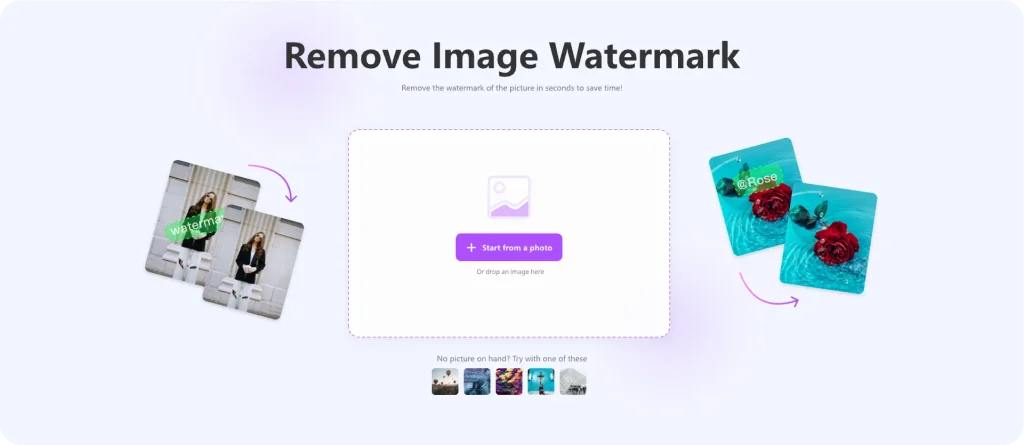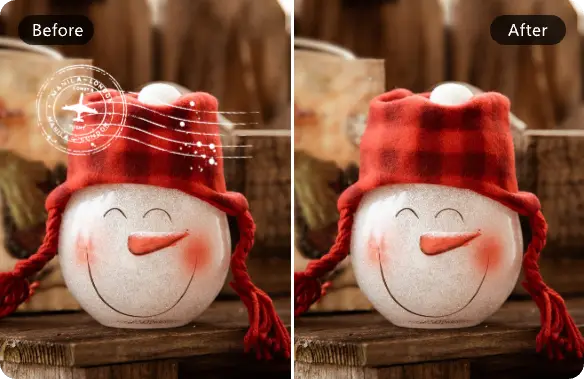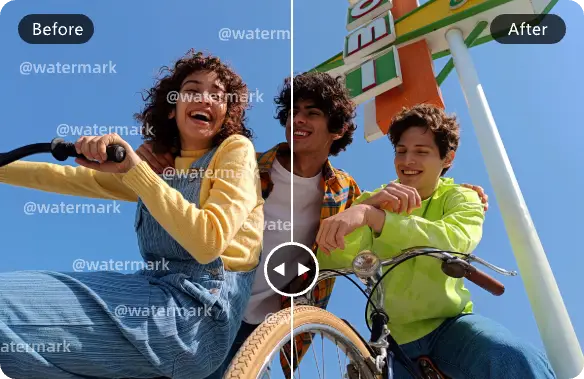Removing watermarks from images has always been a tricky task, often resulting in a loss of quality or visible traces. But luckily, AI is making it possible. With advanced algorithms, AI can detect, isolate, and remove watermarks while restoring the image to its original quality.
So, let’s talk about how this technology works and what it means for creators, designers, and everyone in between.

How AI Watermark Removal Technology Works
Here’s how everything works.
Identify the Watermark Using Pattern Recognition
The first step AI takes in removing a watermark is recognizing the watermark itself. This isn’t as easy as it sounds — watermarks come in many shapes, sizes, and transparencies. To tackle this, AI uses pattern recognition. Pattern recognition involves looking for repetitive shapes or unique markers that don’t naturally belong in the image’s background.
For example.
- Logos or Text: AI spot specific letters or shapes that form logos or brand names.
- Transparency and Overlays: AI identifies areas with a semi-transparent layer, a common watermark style that overlays but doesn’t fully cover the image.
AI models are trained on countless images with and without watermarks, allowing them to learn what watermarks look like. Over time, the AI gets better at detecting watermarks by focusing on features like color contrasts, unique shapes, and overlays.

Image Segmentation to Separate the Watermark from the Background
Once the AI detects the watermark, the next step is image segmentation. This process involves dividing the image into different segments to separate the watermark from the rest of the image.
Using Convolutional Neural Networks (CNNs) — a type of deep learning model often used in image processing — the AI analyzes each part of the image. CNNs are highly effective at distinguishing specific features, so they separate the watermark area from the original image details.
For example.
- The AI scans the image to distinguish which pixels belong to the watermark and which belong to the background.
- Once identified, it “marks” these pixels as the watermark layer while isolating the background data.

Inpaint to Recreate the Background
Once the watermark has been separated, the AI then fill in the blank space with the backdrop of the original image. This is accomplished using a method known as inpainting. An image restoration technique uses information from the surrounding region to fill in areas of a picture that have been lost or erased.
This is how it functions.
- Context-Aware Filling: The AI looks at the pixels close to the watermark region to make an educated judgment as to what should be placed in the empty space. It look at color, texture, and light patterns.
- Patch-Based Techniques: In more complex situations, the AI fills in the region where the watermark has been erased by using “patches” from areas of the picture that look similar. For example, the AI sample various areas of the sky in the picture to recreate the missing place if the watermark was on a blue sky.
This filling technique is quite planned and goes beyond basic copy-paste. To make the filled area appear realistic, the AI matches color tones, patterns, and even lighting direction.

Apply Machine Learning for Accuracy
Removing watermarks is not a one-size-fits-all process. Machine learning is the foundation of AI technology, which gradually increases its accuracy. AI learns to handle various circumstances after being trained on thousands of photographs with different kinds of watermarks.
For example.
- Transparency Levels: Watermarks range from almost opaque to extremely transparent. While maintaining the quality of the background, AI learns how to complete each level.
- Placement and Dimensions Variability: Watermarks get placed in a variety of ways, and AI can adjust their size and positioning to handle both large and small watermarks in different areas.
Because of this ongoing process of learning, the AI model becomes better with practice. It identify and remove watermarks from a variety of backdrops and picture types with more accuracy as a result.

Use Generative Adversarial Networks (GANs) for Enhanced Results
In some advanced cases, AI uses Generative Adversarial Networks (GANs) to remove watermarks with higher precision. GANs are a type of AI model made up of two networks — the generator and the discriminator.
Let’s talk about these.
- Generator Network: This part of the GAN tries to create a new image where the watermark is removed. The generator’s goal is to reconstruct the image as if the watermark was never there.
- Discriminator Network: This network evaluates the generator’s output, checking for any signs of inconsistency or artifacts. If it spots anything unnatural, the generator adjusts its output and tries again.
This back-and-forth process between the generator and discriminator results in highly accurate watermark removal. GANs allow the AI to create realistic textures and details, particularly in complex images with fine details like landscapes, patterns, or architectural photos.
Post-Processing to Maintain Image Quality
After the watermark is removed, AI applies post-processing to ensure the final image looks natural. Here’s what’s involved in this final stage.
- Color Matching: AI adjusts the colors in the filled area to match the surrounding parts of the image. This is crucial for preventing odd spots or patches where the watermark was.
- Smoothing and Blending: In some cases, AI smooths out edges around the removed watermark area, blending it smoothly with the background to ensure there’s no visible trace of the watermark.
- Noise Reduction: The AI apply noise reduction techniques to maintain the image’s quality — especially if the watermark removal process introduced slight noise or distortion.
This final touch-up ensures the image looks as close to its original form as possible, with no indication that a watermark was ever present.
Wrapping Up
AI watermark removal makes it possible to cleanly take watermarks off images while keeping the quality intact. It works by identifying the watermark, removing it, and filling the space so that the image looks smooth and natural — as if the watermark was never there. This is useful for creative projects, design work, and even restoring older photos.
While AI still faces some challenges with complex watermarks, its ability to adapt and learn is making removal easier and better all the time.
So, if you’re ready to experience smooth, high-quality editing, check out ImgEdit.ai and see how it can change your images today.

